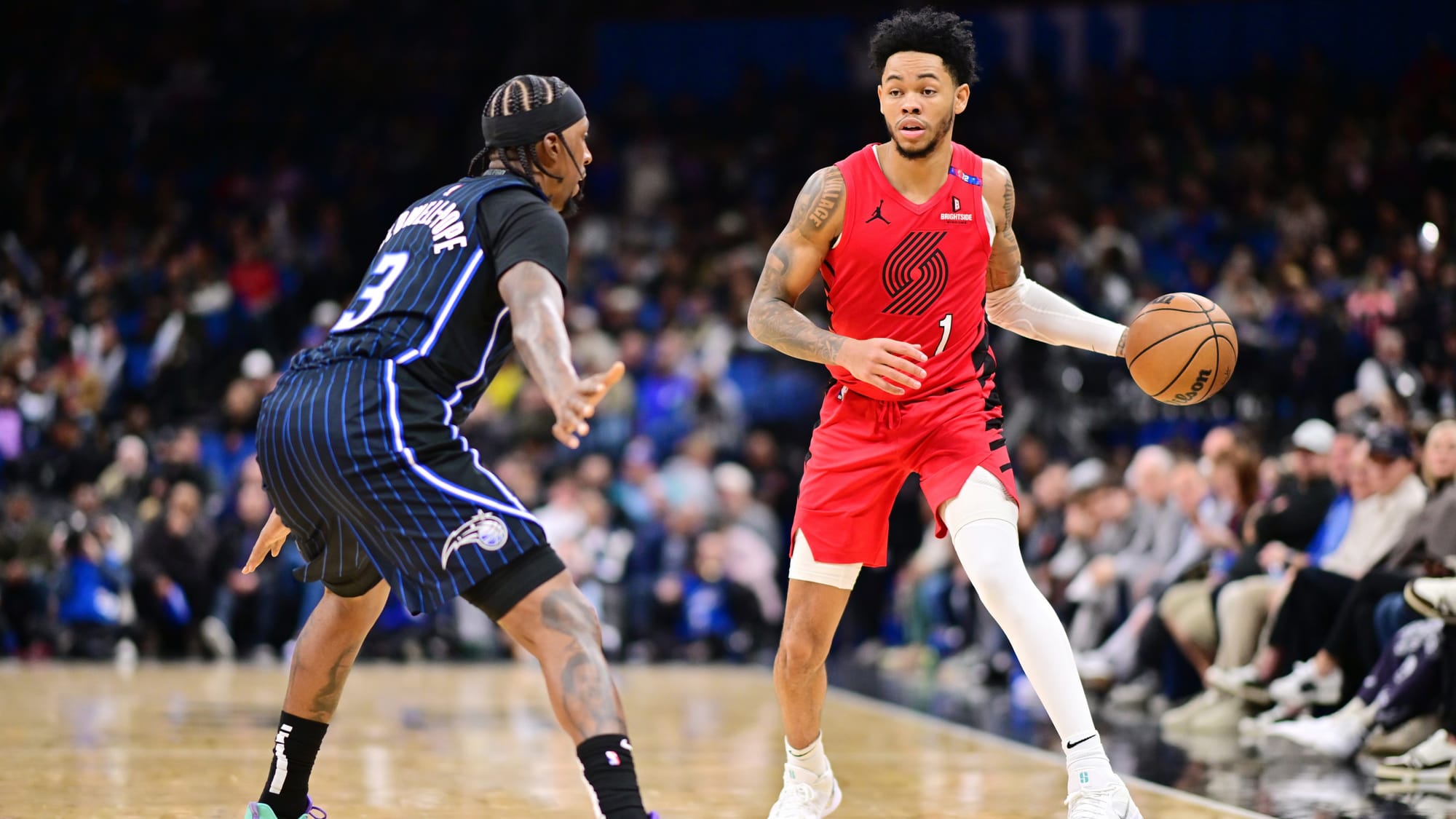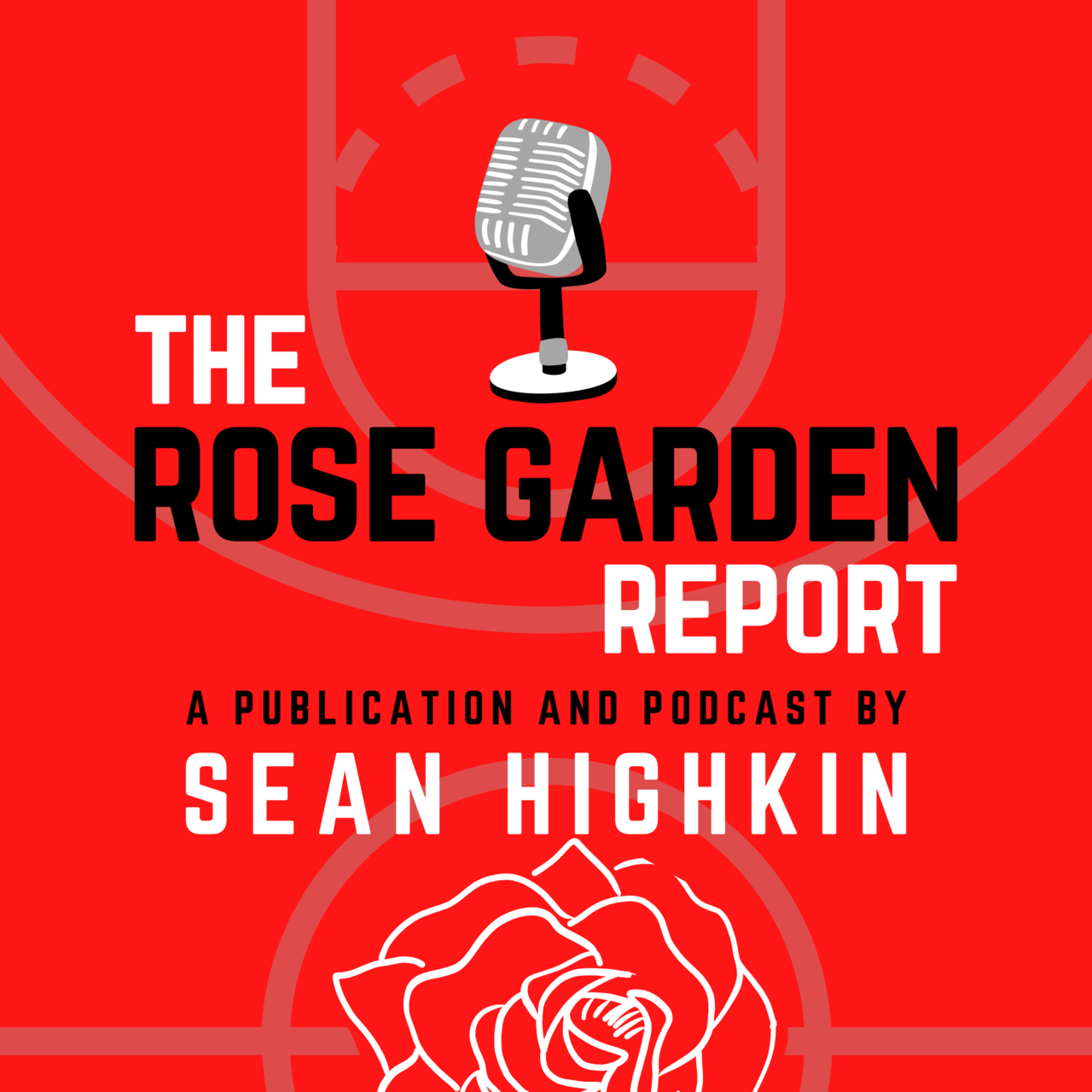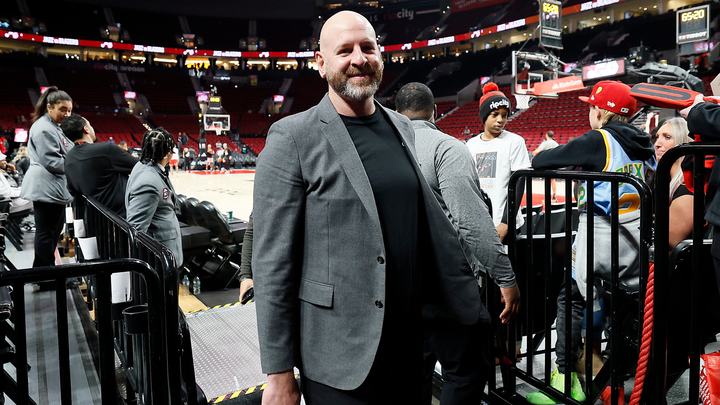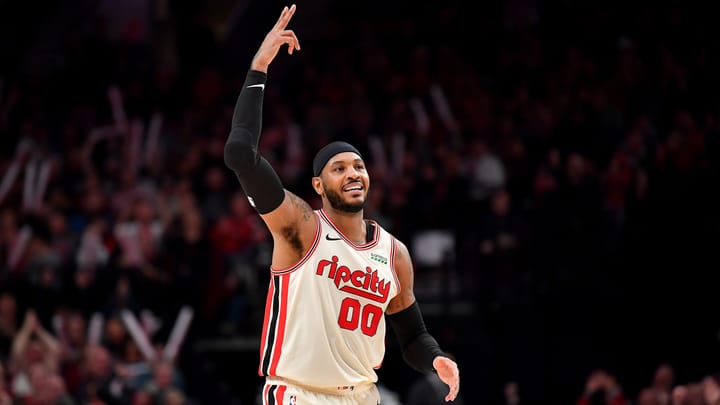How Active Will the Trail Blazers Be at the Trade Deadline?
It makes sense for Portland to trade Anfernee Simons and Jerami Grant by Thursday. Whether they'll be able to remains to be seen.

Heading into the weekend, this was the opening I had drafted for this column:
In what could be some famous last words, don’t expect a lot of fireworks ahead of Thursday’s trade deadline.
That doesn’t mean some big deals couldn’t happen, be it involving the Trail Blazers or elsewhere around the NBA. But anyone expecting or hoping for a frenzy of movement before 3 p.m. Eastern time on Feb. 6 is probably setting themselves up for disappointment.
So much for that.
In the immediate aftermath of the out-of-the-blue Luka Doncic-Anthony Davis trade that short-circuited the NBA on Saturday night, followed by the De’Aaron Fox-Zach LaVine three-team trade on Sunday, the entire league is still wrapping its head around what it means for the rest of the trade market over the next four days.
There are two things to keep in mind this time of year:
- You should always assume any rumored trade that gets reported isn’t going to happen, until it does. Getting worked up about everything you see online, that’s almost definitely out there because somebody involved wants it to be out there for their own benefit, is a waste of energy. (There’s a reason I don’t really get into reporting trade talks and gossip that crosses my radar too often. I hear about plenty of discussions and exploratory things that teams supposedly talked about or are talking about, and my default assumption is that 99 percent of it is either made up or just low-level chatter you hear second- or third-hand, and it’s not worth it to me to try to put points on the board by using the word “sources” and maybe looking smart later if something happens to hit.)
- As evidenced by Saturday’s stunning Lakers-Mavs deal, most trades that actually do happen don’t leak ahead of time. Did anybody have Milwaukee as Damian Lillard’s landing spot before that trade was agreed to? Were there even rumors about Deni Avdija being available before the Blazers and Wizards got that deal done on draft night? The stuff that has legs doesn’t typically get out. If there’s a chance something is going to get over the finish line, everybody involved has an incentive to keep it quiet. Just remember that.
From my understanding, the Blazers’ approach to this deadline isn’t much different from what it’s been in the last few transaction cycles.
They’re open to moving any of their veterans—particularly Jerami Grant, Anfernee Simons and Deandre Ayton, although it’s tough to see Ayton having much of a market right now.
Cronin’s two biggest deals—the Lillard/Jrue Holiday collective blockbusters and last June’s trade for Avdija—are instructive when it comes to how this front office views this time of year.
In those two deals, the Blazers were focused less on selling off veterans for a large number of draft picks and more on identifying players that fit their plans. Ayton, Toumani Camara and Robert Williams III were players Cronin and his staff wanted to put with Scoot Henderson and Shaedon Sharpe as they began the post-Lillard era. Down the line, it became clear that Ayton isn’t going to be a long-term player, at least not for the money he’s making. But at the time of the trade, they viewed him as a talent worth betting on that fit stylistically with their own young players.
In the case of the Avdija trade, they felt so strongly about his fit and upside that they actually traded away two of the draft picks they got from the Holiday trade with Boston to get him from Washington, something teams in their position don’t typically do. Because of where they are in their rebuild, that decision raised some eyebrows at the time, but the Avdija acquisition has been a home run so far. I don’t expect them to put more of their draft picks in play in deals (particularly the 2028-30 Bucks picks and swaps they got in the Lillard trade, which are looking pretty valuable), but if they’re getting back a good enough player that truly moves the needle, you can’t completely rule it out.
All of this is to say that if the Blazers are going to trade Simons or Grant in the next four days, and their options are deals to get back draft picks or a player they like and feel they can add to their long-term core, the smart money is usually on them opting for the player.

As for Williams, the Blazers are open to trading him for the right return, but that bar is higher than most people would think. Various reports in recent weeks that Williams could be had for a handful of second-round picks scan mostly as wishcasting by other front offices. Williams’ injury history is something that would understandably give teams pause about giving up a lot for him, but he’s been good and impactful enough for the Blazers this season that they’re happy to keep him if they don’t get an offer that meets where they value him.

It’s tough to say how likely it is that Grant, Simons or Williams gets moved this week. Particularly with Grant and Simons, both of whom are making more than $25 million this season, it’s hard to put together a deal that makes sense in-season because salaries that big are hard to move under the current CBA’s tax structure.
Many of the teams that would be in a position to want to make upgrades—including Milwaukee, Minnesota and Phoenix—are over the second apron and can’t combine salaries in deals, and don’t have much in the way of picks to trade because they’ve already used them all up in other deals. Others, like Denver and Golden State, are over the first apron and just below the second apron, not really in a position to take back big money for good-but-not-elite starters like Grant and Simons that aren’t the final piece to a title run.
And the teams that do check the boxes of being in win-now mode and having financial flexibility and things to trade, like Orlando, Memphis and Oklahoma City, are all organizations that are generally very conservative and risk-averse with in-season moves. That’s not to say one of those teams couldn’t do something this week (the Magic, for example, have long been whispered about as a potential Simons landing spot, both because he’s from that area and because they desperately need shot creation), but they don’t have a history of making big trades during the year, so there’s no reason to assume they’ll do it this year.
Then again, the Spurs are another front office that rarely ever does anything major during the season, and they just made the move to acquire Fox from Sacramento.

Aside from the fallout from the Lakers-Mavs trade, the Jimmy Butler situation is the one that the whole league is watching, and will affect what else does or doesn’t get done before Thursday. Because of the level of money involved, that deal, if it happens, will take time to put together, and could be holding up other moves that teams are hoping to make. But there’s also an opportunity there for teams like the Blazers, who have money they want to move, to act as a third, fourth or fifth team to help facilitate. I haven’t specifically heard that Portland is involved in that scenario, but I have no reason to believe they’d be opposed to it if something made sense for them.
(For those wondering if the Blazers would get involved in a deal with the Heat as a facilitating team with Butler: the Portland and Miami front offices have talked about other deals, including Holiday and Malcolm Brogdon, in the aftermath of all the drama of the summer of 2023 and have a perfectly fine working relationship. The idea that there’s lingering bad blood between the two organizations that would preclude them from doing business together today is mostly a creation of some members of the local media in one of those markets or the other trying to deflect from their own role in making that three-month stretch as ugly as it was.)
The other thing to keep in mind this time of year, especially with how tough the CBA makes it to move big money in-season, is that teams often use the days and weeks before the deadline to lay the groundwork for deals they’ll revisit in the summer.
The Blazers, for example, talked pretty seriously with Detroit about a trade for Grant before the 2022 deadline, but it didn’t get done in part because the Pistons wanted more certainty on where the pick Portland got from New Orleans would end up. Once that was settled, they circled back that June and got the deal done.
In the summer, not only is the salary cap expected to rise by 10 percent with the new TV deal coming in, giving teams flexibility under the tax, but it’s easier to execute multi-player trades. During the offseason, teams are allowed to have up to 20 players under contract and don’t have to get down to 15 until opening week of the season. So if a trade for Grant or Ayton involves trading two or three players to match the salary, it’s more realistic that it could happen in July than February simply because there’s less of a roster crunch.
We’ll find out in the next four days how the Doncic-Davis trade resets the market. There’s one school of thought that says it could open the floodgates to more deals getting done; there are others who feel that if someone like Doncic, who is at worst a top-five player in the league and is 25 years old, only netted one future first-round pick in addition to Davis, other teams won’t want to give up anything for lesser players. The Kings got two first-rounders for Fox but also had to take on LaVine’s salary. There’s no perfect deal for any of these guys.
Before Saturday, I had a pretty good idea that not a lot was going to happen. Now, who knows?





Comments ()